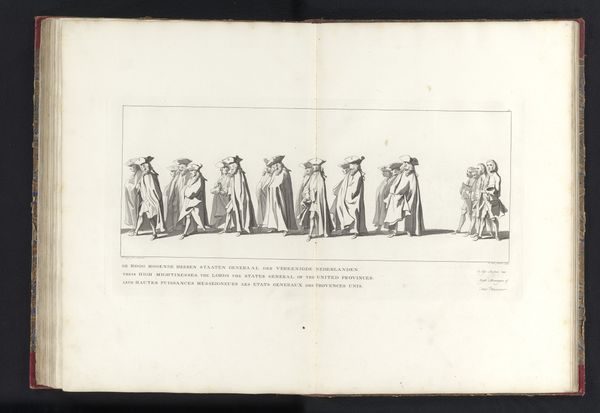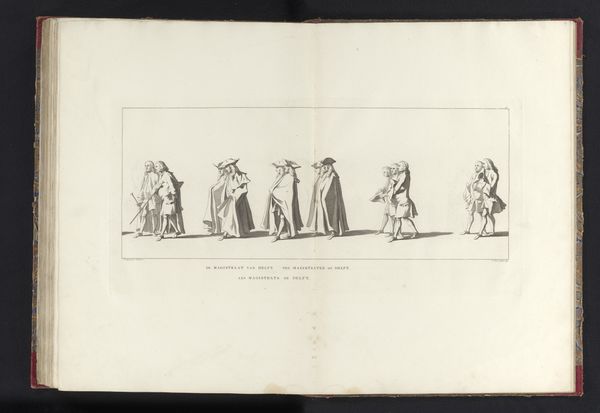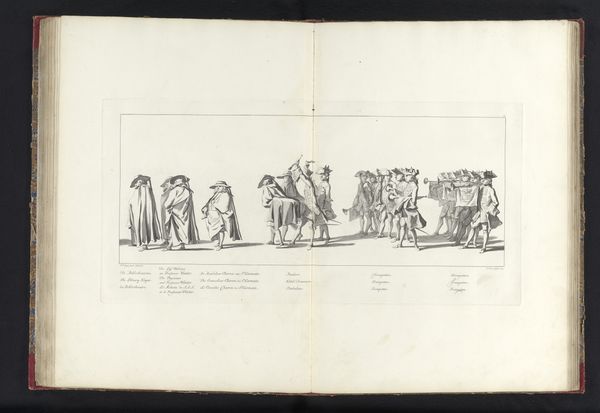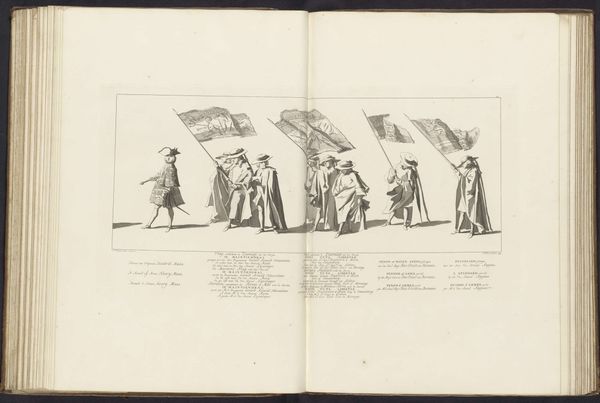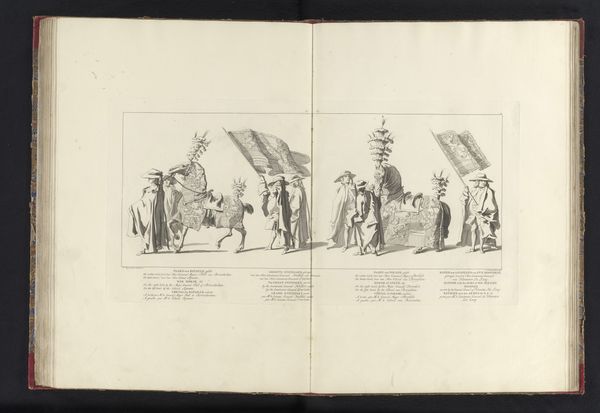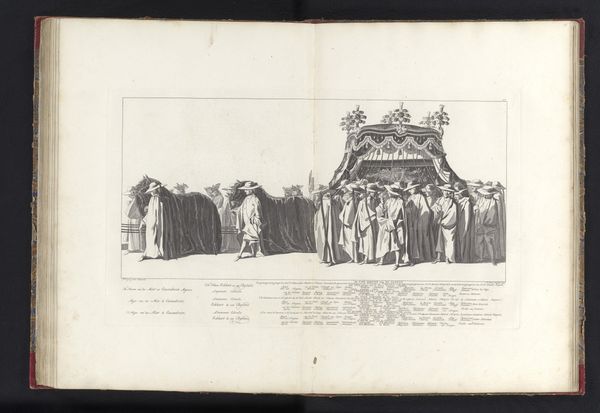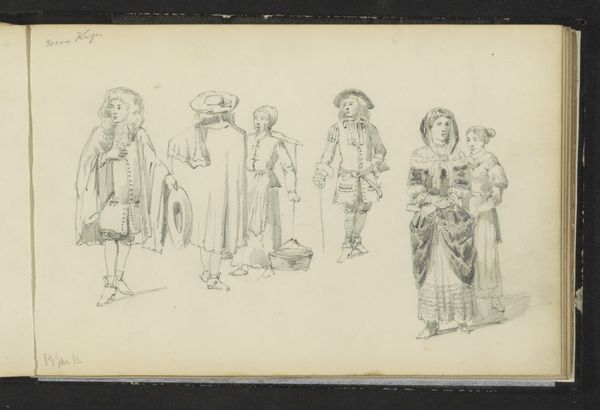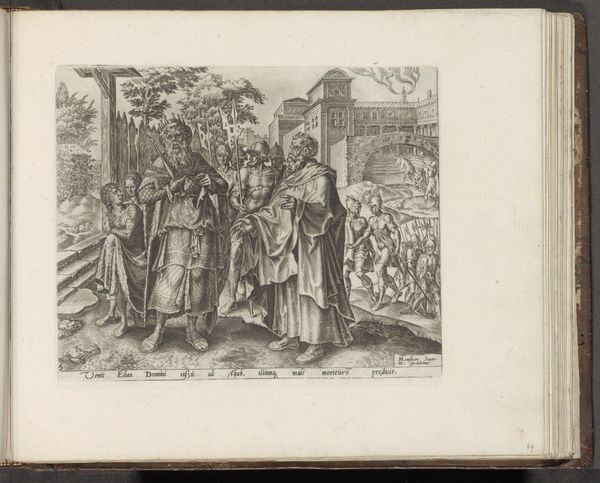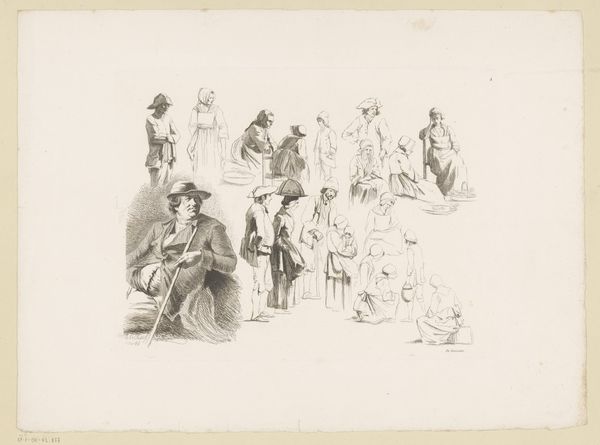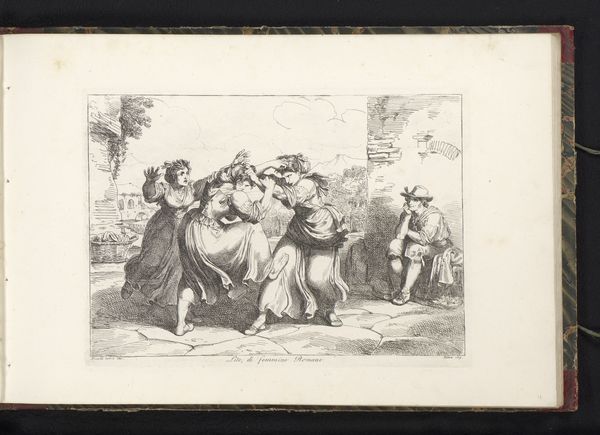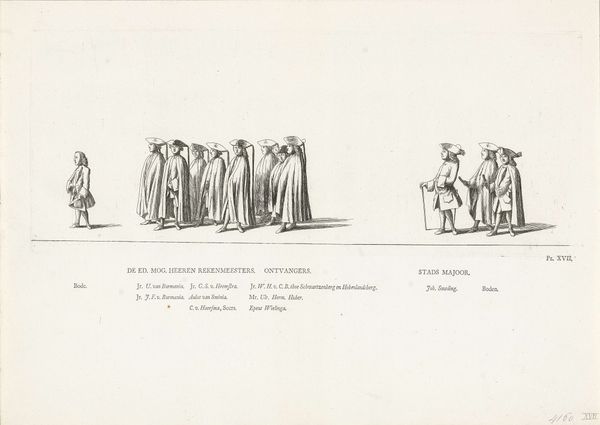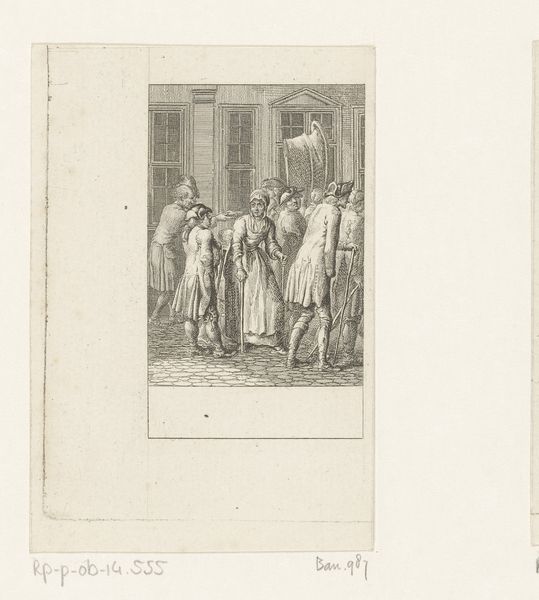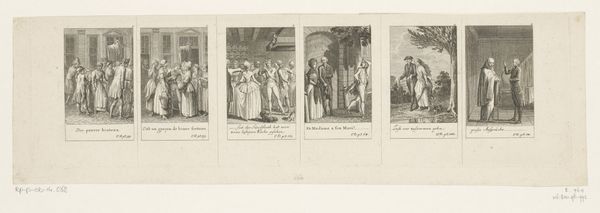
drawing, ink, pen
#
portrait
#
drawing
#
narrative-art
#
baroque
#
pen sketch
#
ink
#
pen
#
cityscape
Dimensions: height 270 mm, width 560 mm
Copyright: Rijks Museum: Open Domain
Editor: So, this is "Lijkstatie van Willem IV, 1752, plaat 26," a pen and ink drawing made between 1754 and 1755 by Jan Punt. It’s a cityscape depicting what looks like a somber procession. I’m struck by the starkness of the materials – the thin lines of ink on the page, it almost feels like a documentary sketch. What can you tell me about this work, from your perspective? Curator: Considering this from a materialist angle, I find myself thinking about the labor involved in producing images like these, even seemingly simple ink drawings. Each line represents time, skill, and access to materials like paper and ink, not just for the artist, Jan Punt, but also for the publisher who commissioned the work and ultimately, the consumer. Think about who would have had the resources to acquire prints like these and the narrative they tell. It depicts a funeral procession, so we are looking at how power and status are materially displayed, even in death. Notice the different garbs and robes, and who gets to wear those. What story is told about wealth and labour? Editor: That's fascinating! I hadn't really considered the economics of art production back then. The drawing itself seemed so simple, but understanding it in relation to labor and consumption provides an important new layer to the understanding. Can one assume it's about the Dutch elite? Curator: Precisely. Consider the labor involved in constructing those elaborate robes and carriages – labor often hidden from the view of the elite. It invites us to look at art not just as representation but as a material object embedded in social relations of production and consumption. These things can not be dissociated. Does knowing the socio-economical implication change how you see the procession? Editor: Absolutely, it transforms it. It goes from being a scene of mourning to a commentary on the societal structures of the time. It definitely makes me want to explore similar works to understand how artists of the era engaged with themes of labor and class through their choice of materials and subjects. Thanks! Curator: Indeed! Approaching art this way encourages critical questions. It highlights the interplay of materiality, making, and socio-political context of art. It's about shifting focus towards materiality to examine those hidden facets of any society.
Comments
No comments
Be the first to comment and join the conversation on the ultimate creative platform.
